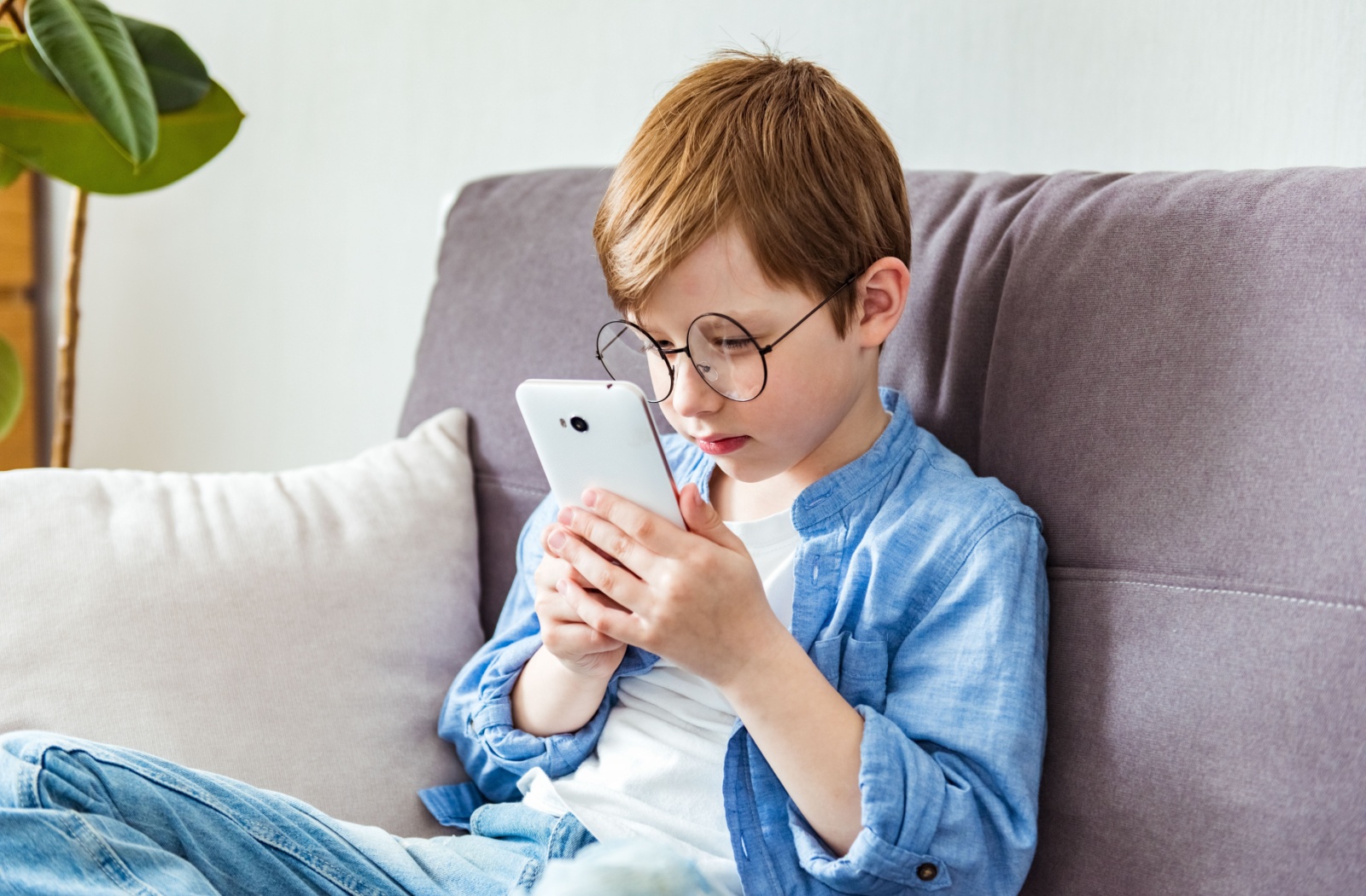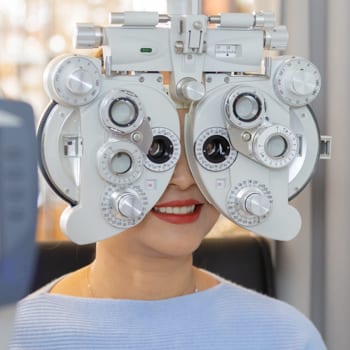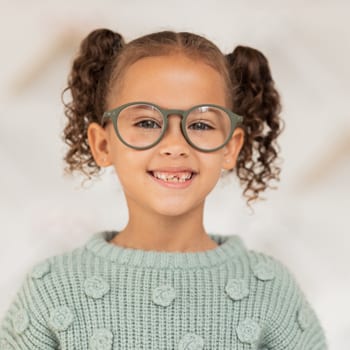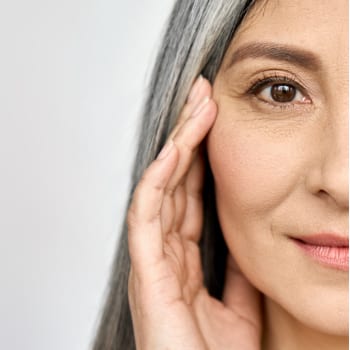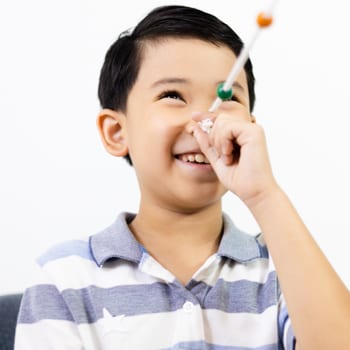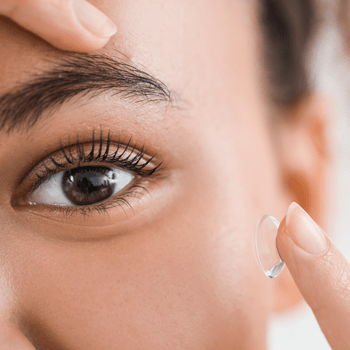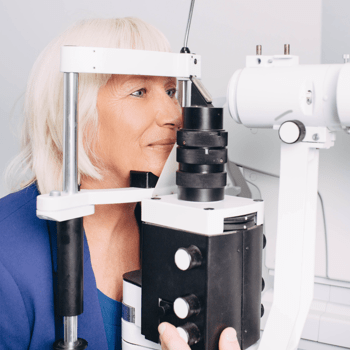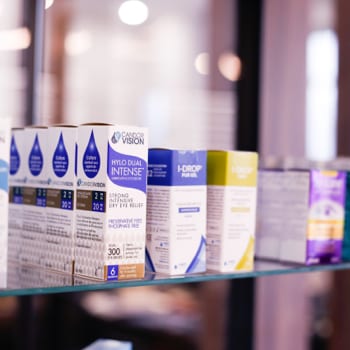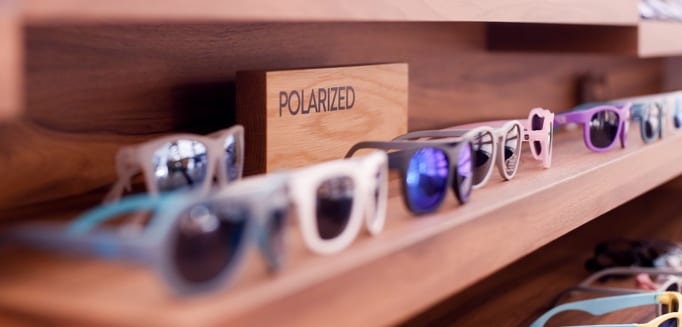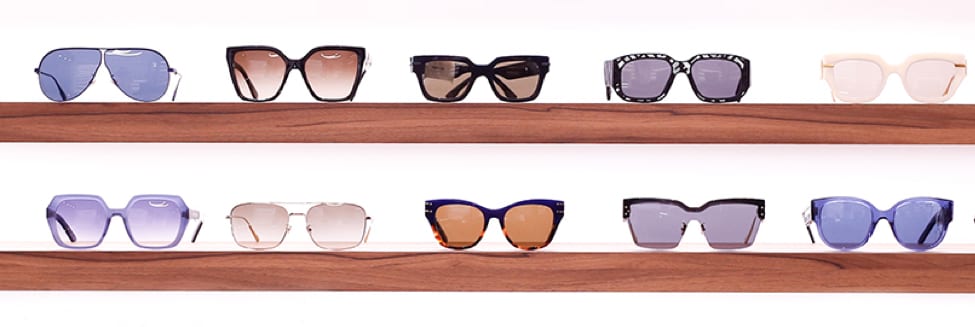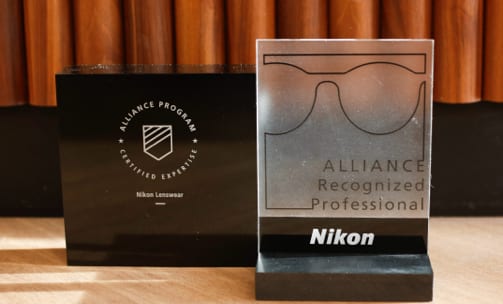If you struggle to see distant objects but don’t have a problem with nearby vision, you could be dealing with myopia, also known as nearsightedness. Though it’s highly treatable, myopia is a lifelong condition that can get more severe over time.
Myopia typically does not improve with age. However, it does tend to slow or stabilize in early adulthood. If you ever notice significant vision changes as an adult, immediately visit your optometrist for a comprehensive eye exam.
Our very own Dr. Tsang was recently featured on Breakfast Television discussing myopia and its long-term impact. Watch the segment below to learn more.

What Is Myopia?
Myopia is a refractive error. That means it affects how light refracts inside your eye. It’s caused by an issue with the shape of the eye—either the eye grows too long or the lens curves incorrectly. This leads to blurry vision when you’re trying to focus on distant objects. Because of this, myopia is often called nearsightedness.
Genetics and lifestyle are closely tied to a person’s risk of developing myopia. If one parent or both are nearsighted, a child is much more likely to develop the condition. Usually, myopia begins showing signs around the time kids are in school.
How Does Myopia Progress Over Time?
Once myopia starts progressing, it usually worsens until it stabilizes in the late teens or early adulthood. Children with myopia may experience noticeable vision changes over the years as their eyes continue to grow. Once the eyes are fully developed, myopia often levels off.
However, some adults still experience vision changes beyond this point. These changes are often linked to lifestyle factors, such as prolonged screen time or jobs that require intense near-vision work. Over time, the eyes adapt to these demands, which can gradually lead to worsening vision.
Myopia does not naturally improve over the years. If you ever notice a strange improvement in your vision, visit an optometrist for a comprehensive eye exam. Sudden changes can indicate other changes in the eyes, and this could be a sign of a serious underlying eye condition.
How to Recognize Myopia in Children
If you think your child has myopia, it’s important to address it early. By stepping in sooner rather than later, your optometrist can take action to slow myopia progression.
Some common signs of myopia include:
- Squinting frequently to see distant objects clearly
- Complaining of headaches or eye strain
- Holding books or devices very close to their face while reading or watching
- Difficulty seeing the board in class or distant objects clearly
- Blinking excessively or rubbing their eyes often
- Showing a lack of interest in outdoor activities that involve seeing things at a distance
If these sound familiar, visit an optometrist. An eye exam is all it takes to detect myopia.
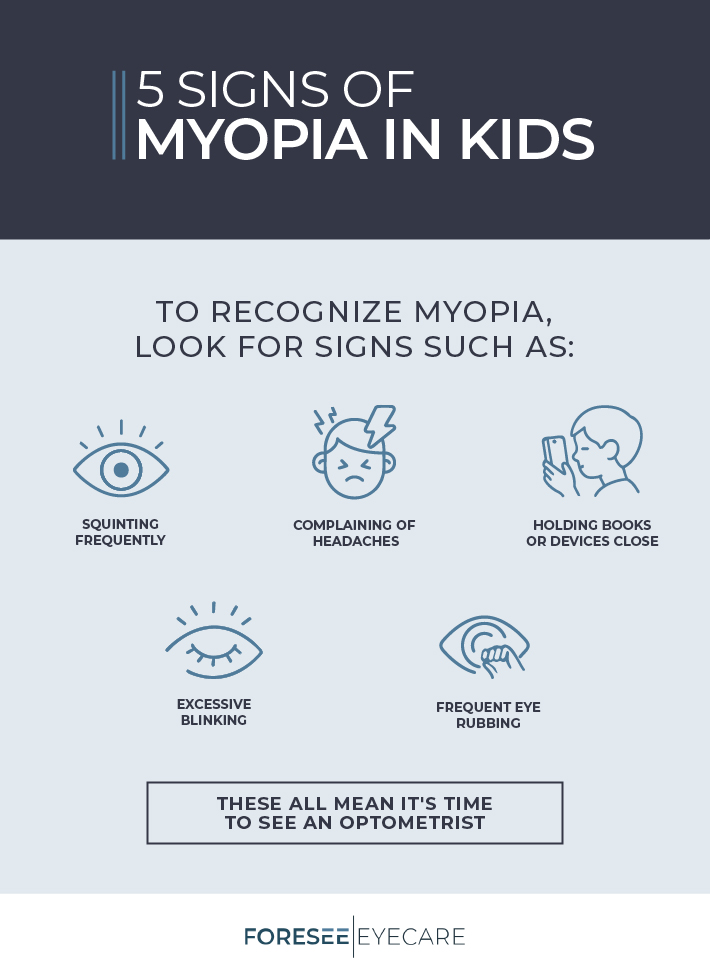
The Long-Term Risk of High Myopia
For those with high myopia, or severe nearsightedness, the risks don’t stop at blurry vision. High myopia significantly increases the risk of certain eye conditions that could impact your child’s long-term vision health.
Some potential complications include:
- Retinal detachment (loss of peripheral vision threatening central vision)
- Myopic maculopathy (loss of central vision)
- Glaucoma (loss of peripheral vision)
- Cataracts (general decreased vision)
This is why myopia control exists. It’s not just about long-term vision, but about protecting your child’s eyes and investing in their future health.
What Is Myopia Control?
While glasses and contact lenses are the most common approach to correcting myopia, technology has come a long way. Now, there are several effective ways to control myopia in children.
Atropine Eye Drops
Atropine drops are a special type of eye drop. They temporarily relax the focusing muscles in the eye, helping to slow down the progression of myopia. These drops are typically used in low doses and can be prescribed by an optometrist.
Myopia Control Lenses in Glasses
Myopia control lenses work on different mechanisms of action, typically in peripheral defocus or contrast sensitivity. They work by slowing down the elongation of the eye that causes myopia progression. These lenses are worn regularly and replaced on a schedule determined by your optometrist through regular monitoring and tracking.

Orthokeratology
Orthokeratology, or ortho-k, uses specially designed, semi-rigid gas-permeable contact lenses worn overnight. These lenses gently reshape the cornea to address the irregular shape of the eye or lens. This method is highly effective and can significantly slow the progression of myopia over time.
Myopia Control soft Contact Lenses
These contacts are worn with customized prescriptions during waking hours. They are designed as daily disposable for health and convenience reasons. Most children and adolescents and teenagers can wear these soft contact lenses for an entire day without issues.
How Often Should a Child Have an Eye Exam?
Myopia control is an excellent way to deal with myopia. It preserves more of a child’s future vision and protects their long-term vision health. When combined with regular eye exams, myopia control can make a significant difference in a child’s visual development.
For most children, annual eye exams are recommended starting around 6 months of age. However, if your child has myopia, more frequent visits may be necessary. Their eyes will likely change as they develop, and more routine and frequent visits help you stay ahead of potential problems.
Clearer, More Comfortable Vision Is Within Reach
Myopia doesn’t improve with age. As a child develops, their vision will likely worsen before stabilizing in early adulthood. If you have concerns about your or your child’s vision, don’t ignore them—instead, come visit our team at Foresee Eyecare.
Our team can examine your eyes to determine what’s causing any vision changes. We’re dedicated to helping keep your vision clear. Schedule your appointment with us today.

